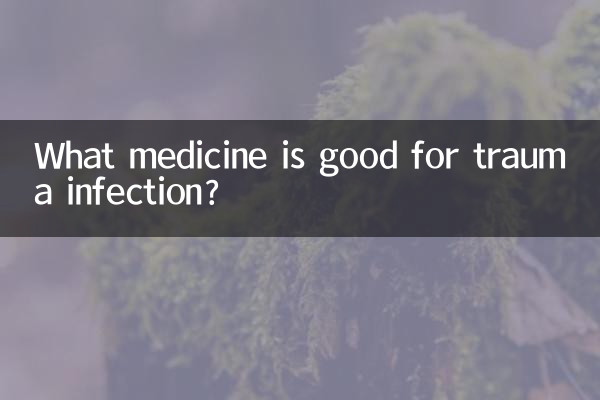What medicine is good for trauma infection?
In daily life, minor trauma such as cuts, scrapes or scratches are inevitable. If not treated properly, these wounds can become infected, causing redness, pain, and even pus. This article will combine the hot topics and hot content on the Internet in the past 10 days to give you a detailed introduction to what drugs should be used after trauma infection, and provide structured data reference.
1. Common symptoms of trauma infection

Trauma infections usually present with the following symptoms:
| symptom | describe |
|---|---|
| Redness and swelling | Redness and swelling of the skin around the wound |
| pain | Persistent or worsening pain from the wound |
| suppuration | Yellow or green pus oozing from the wound |
| fever | Local or systemic fever in the wound |
2. Commonly used drugs for trauma infections
According to popular discussions and medical advice on the Internet in the past 10 days, the following are commonly used drugs for trauma infections:
| Drug name | effect | How to use |
|---|---|---|
| iodophor | Disinfection and sterilization to prevent infection | Apply directly to the wound |
| Erythromycin ointment | Antibacterial, anti-inflammatory, promote healing | Apply to the wound and then bandage it |
| Mupirocin ointment (Bidaubang) | Targets bacterial infections, especially for purulent wounds | Apply 2-3 times daily |
| Amoxicillin (oral) | antibiotics, for serious infections | Take as directed by your doctor |
3. How to deal with trauma infection
In addition to using medications, proper wound management is also key. Here are the steps for managing a trauma infection:
1.Clean the wound: Rinse the wound with saline or water to remove dirt and bacteria.
2.disinfect: Use iodophor or alcohol to disinfect the wound and surrounding skin.
3.Apply ointment: Choose appropriate ointment to apply according to the degree of infection.
4.bandage: Cover the wound with sterile gauze or band-aid to avoid secondary infection.
5.observe: Check the wound every day. If symptoms worsen (such as fever and increased suppuration), seek medical attention promptly.
4. Tips to prevent trauma infection
Prevention is better than cure, here are some suggestions for preventing trauma infections:
| suggestion | illustrate |
|---|---|
| Treat wounds promptly | Even small wounds should be cleaned and disinfected as soon as possible |
| Avoid contact with dirt | When the wound is not healed, avoid contact with water, soil, etc. |
| keep dry | Bacteria can easily breed in a humid environment, so be sure to keep it dry after bandaging. |
| Enhance immunity | Eat a balanced diet, get enough sleep, and improve your body’s resistance |
5. When do you need medical treatment?
It is recommended to seek medical attention immediately if:
- The area of wound infection expands, and redness, swelling, and pain intensify
- Accompanied by systemic symptoms such as high fever and chills
- The wound is deep or large and self-treatment is ineffective
- Wound infection in patients with diabetes or those with low immunity
Conclusion
Although trauma infections are common, most can be cured quickly with proper treatment and medication. The drugs and procedures provided in this article are based on hot topics and medical advice from the entire Internet in the past 10 days. We hope to help you. If symptoms are severe or persist, be sure to seek medical attention promptly to avoid delaying treatment.

check the details

check the details